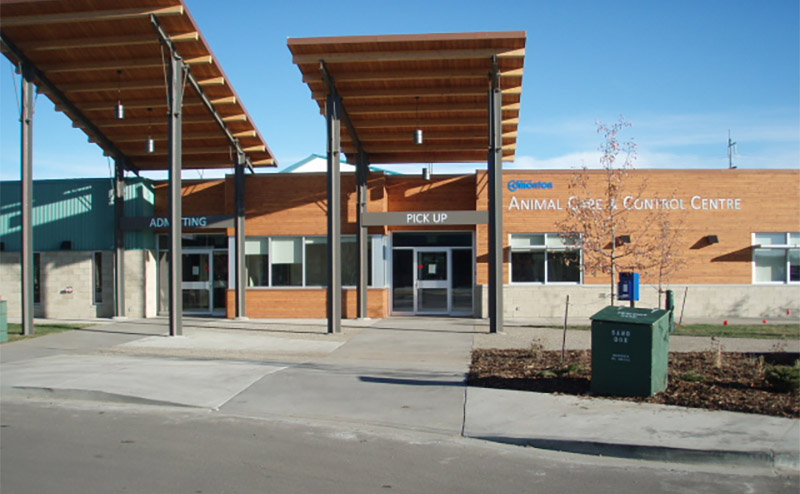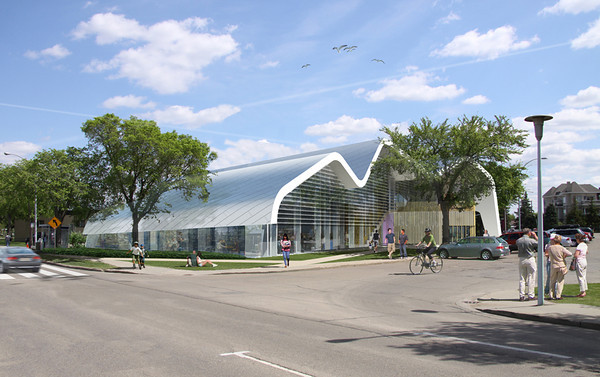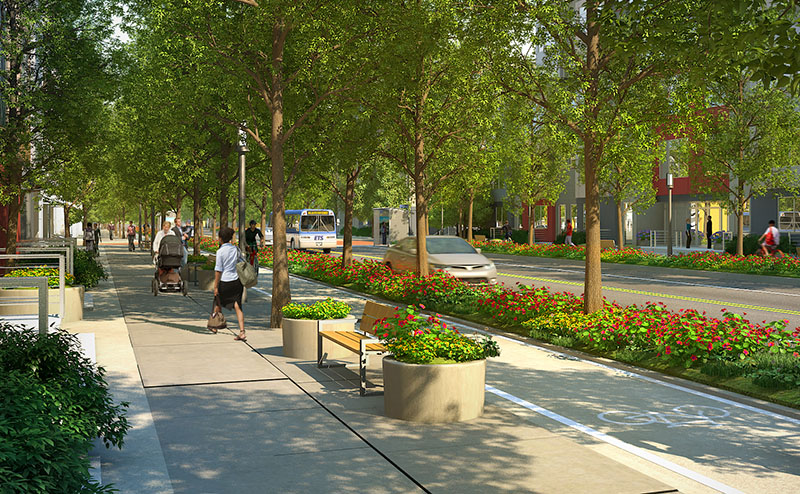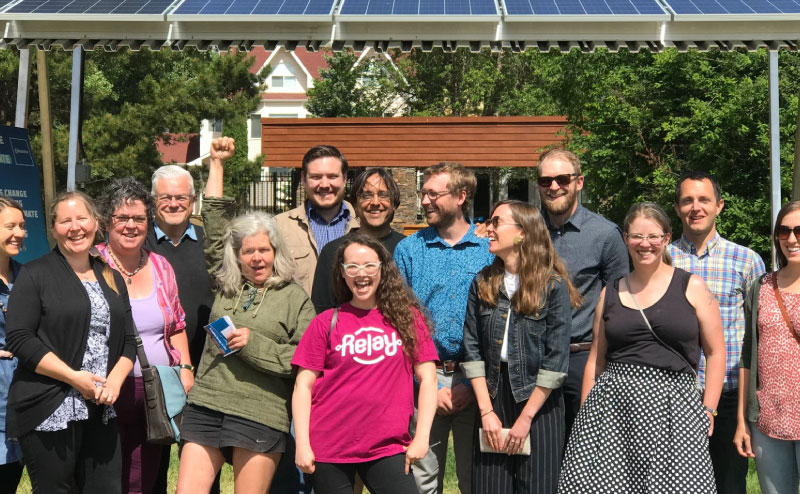Building green is about conserving resources during the construction of a building and throughout its operation to ensure it performs to environmentally sustainable standards. Green buildings contribute to Edmonton's energy transition goals by lowering greenhouse gas emissions and increased savings in the building's utilities. They also contribute to biodiversity protection and restoration, urban agriculture and improve comfort, productivity and livability for the people who occupy them.
What the City is Doing
In association with the City's declaration of a Climate Emergency in August 2019, a revised Energy Transition Strategy was presented to, and adopted by, Council on April 19, 2021. At the same time Council adopted a new Climate Resilient Policy C627.
Climate Resilient Policy C627 aligns with the strategic goal of Climate Resilience in ConnectedEdmonton, the Big City Move of Greener as we Grow in The City Plan and the City leadership actions set out in the Revised Energy Transition Strategy.
Six new Administrative Procedures have been drafted to provide direction on how Administration is expected to activate C627.
These procedures focus on City Buildings and ensure that the construction, operation and maintenance of City buildings are environmentally sustainable and reduces each individual building's carbon footprint. The policy requires that all new buildings are built to an emissions neutral standard. Embodied carbon analysis is completed for new construction and ideas such as passive design strategies, well-insulated building envelopes and the use of energy-efficient technologies like LED lighting are encouraged. It also requires a minimum 1% of the project budget for new building construction to be dedicated to on-site energy generation.
But this work is not new to the City, since January 1, 2008, all new City-owned buildings have been designed and constructed, at a minimum, to meet Leadership in Energy and Environmental Design (LEED®) Silver standard. In addition, these projects are required to be formally LEED® certified.
In order to track, certify and continuously improve on the environmental performance of buildings, the procedures also dictate that eligible City-owned buildings will benchmark their energy use, seek BOMA BEST certification and undergo energy efficiency audits. Buildings must also follow an emissions neutral portfolio plan and decision-making framework to identify the type and depth of Climate Resilience upgrades that will be applied to a specific building.
Green Communities
Light Efficiency Community Guidelines
Since 2013, the City of Edmonton has required civic infrastructure to have effective exterior lighting, through its Light Efficient Community Guidelines.
A light-efficient community is one that uses light effectively and for its intended purpose. It includes the responsible use of light, helping to minimize energy usage and potentially negative effects of exterior lighting. Electric lighting is used appropriately for safety and comfort. Everyone in the community works together to help achieve this, and its implementation benefits humans, wildlife, plants and the natural nighttime environment.
Examples of Green Buildings and Communities
Blatchford
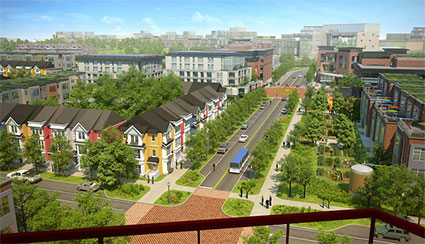
As the largest development of its kind, Blatchford holds the potential to influence the way the world thinks about creating communities.
City Hall

Edmonton’s City Hall is home to civic leadership and is a significant gathering place in the community. The facility incorporates many green features, and is 17% more energy efficient than the national average for office buildings.
Learn more about the features of City Hall through the City of Edmonton Green Building Audio Tour.
Edmonton Tower
 Edmonton Tower opened in 2017 in Edmonton’s Ice District and has been awarded LEED® Gold Certification. The City of Edmonton is a major tenant in the building, owned by the Alberta Investment Management Corporation and operated by Katz Group Real Estate.
Edmonton Tower opened in 2017 in Edmonton’s Ice District and has been awarded LEED® Gold Certification. The City of Edmonton is a major tenant in the building, owned by the Alberta Investment Management Corporation and operated by Katz Group Real Estate.
Learn more about the features of Edmonton Tower through the City of Edmonton Green Building Audio Tour.
Edmonton Valley Zoo
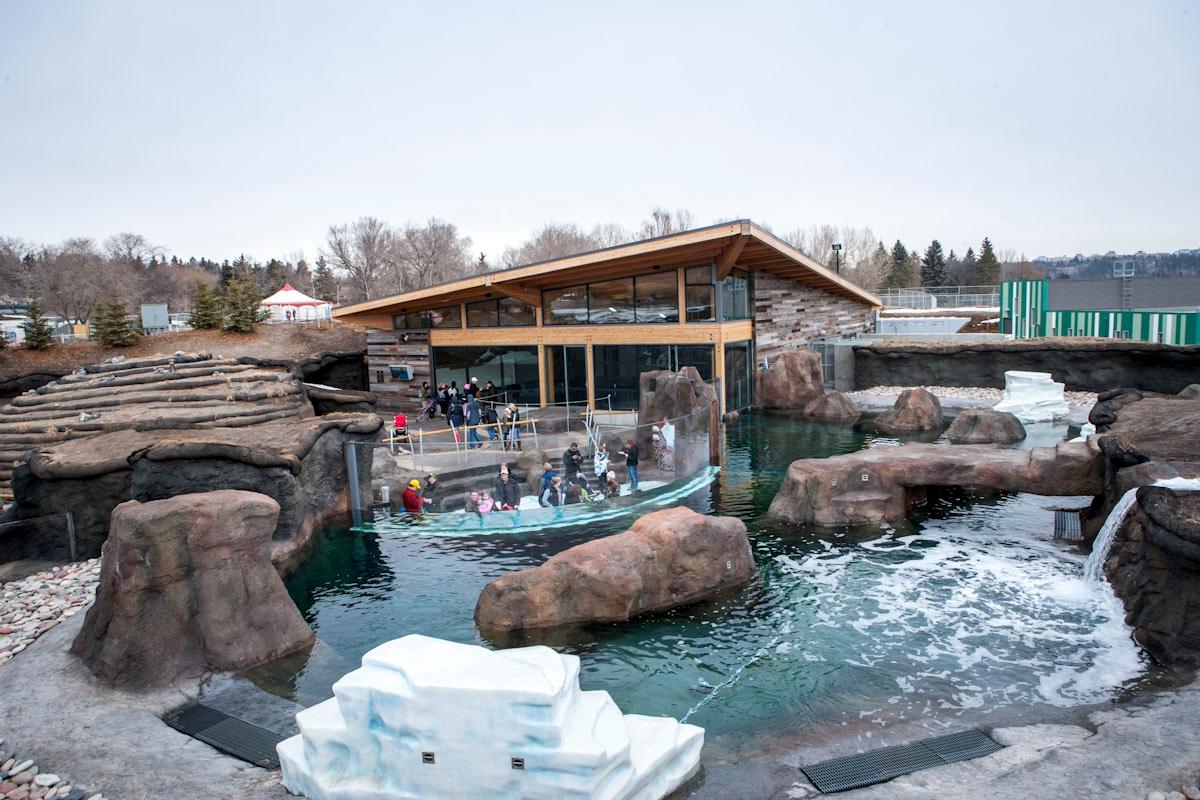
Exhibits and projects at the Edmonton Valley Zoo serve as models of environmental responsibility. The Wander and Ed-Venture Lodge, which opened in 2013, achieved LEED® Silver certification.
Kennedale Eco Station
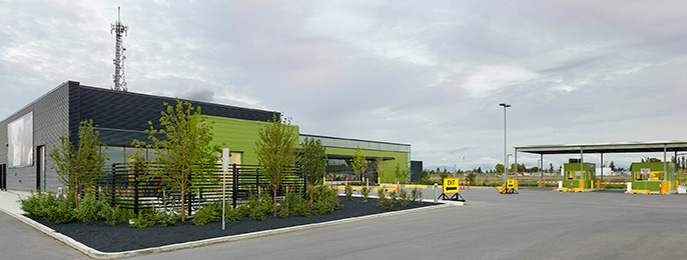
The Kennedale Eco Station, located in northeast Edmonton, is a comprehensive waste drop-off facility. It was awarded LEED® Gold Certification and received CaGBC’s Green Building Excellence Award for New Construction (Commercial).
Meadows Community Recreation Centre
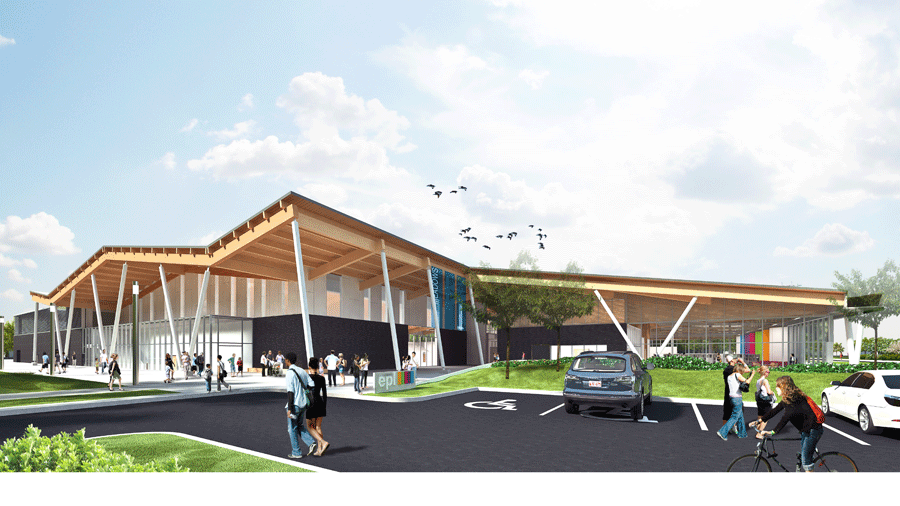
The Meadows Community Recreation Centre brings people together to enjoy sport, recreation, social and cultural activities – all under one roof. It has achieved LEED® Silver Certification.
Meadows Fire Station No. 26
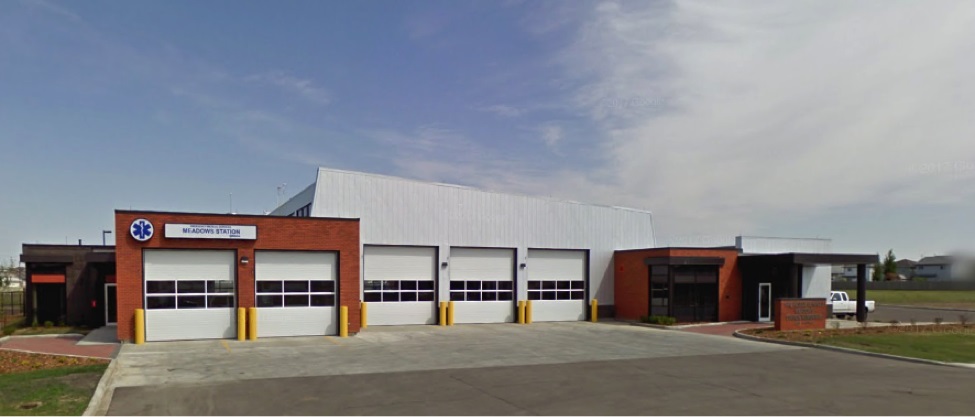
Meadows Fire Station No. 26 features a 5 kilowatt (kW) solar photovoltaic system that helps generate energy consumed on-site.
Queen Elizabeth Outdoor Pool
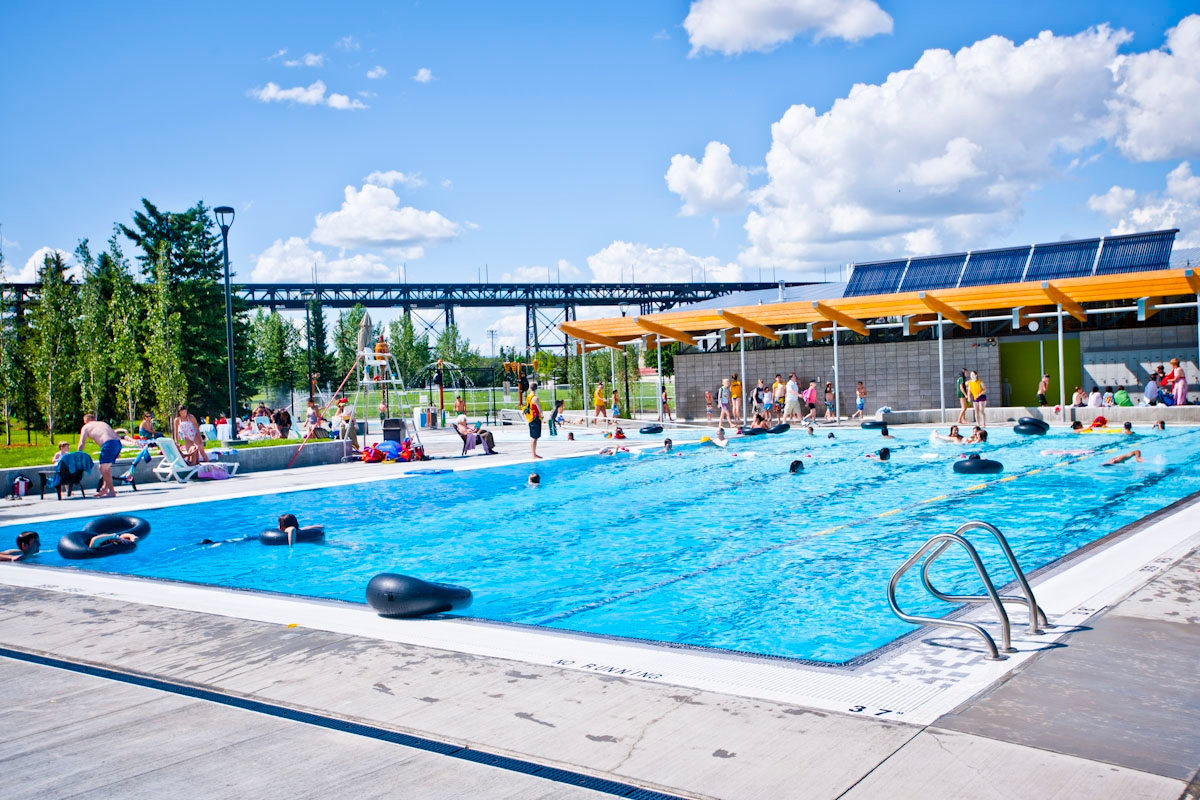
Queen Elizabeth Outdoor Pool was designed to be a modern green space that connects naturally to Edmonton's river valley. It incorporates many passive design elements, as well as solar systems that provide both energy and heat water.


